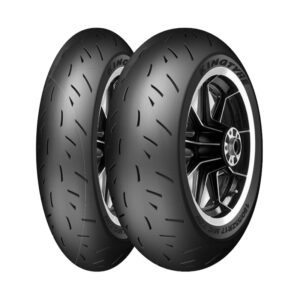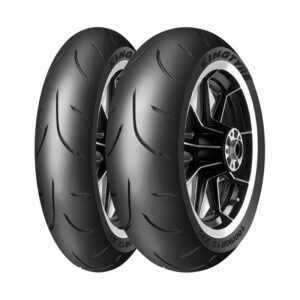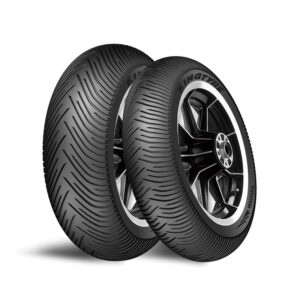You’re scrolling through forums or talking with fellow riders at a track day, and the conversation turns to tires. The term “semi-slicks” comes up, often accompanied by hushed tones and questions about their legality. Are these high-performance tires a secret weapon for the street, or are they a one-way ticket to a fine? The answer isn’t as straightforward as you might think, and it all comes down to one crucial factor: certification.
Before we dive into legality, let’s clarify what we’re talking about. The term “semi-slick” can be a bit of a catch-all, but it generally refers to a tire that bridges the gap between a full racing slick and a traditional street tire.
Think of it like this:
Their purpose is clear: to deliver near-track-level performance for enthusiastic street riding and canyon carving.
So, are semi-slicks illegal? The simple answer is: it depends entirely on the tire’s certification. The law in most countries, including those across Europe and many other regions, doesn’t ban a tire based on its name or how it looks. Instead, legislation focuses on whether a tire meets specific safety standards.
The most common and recognized standard is the ECE (Economic Commission for Europe) certification. For a tire to be legally used on public roads in these areas, it must bear the ECE mark—a circle containing an “E” followed by a number. This stamp is your guarantee that the tire has passed rigorous tests for:
If a “semi-slick” or “street slick” tire has this certification, it is, by definition, legal for road use. If it lacks this certification (like many pure race compounds), then it is not approved for public highways.
This is where Kingtyre stands out from the crowd. When riders search for “street slicks for sale,” they often find uncertified race tires that are not intended for the street. The Kingtyre K06, however, is a different beast entirely.
The Kingtyre K06 tread pattern has been certified by ECE and can be driven on public roads. This is the critical differentiator. The K06 is engineered to deliver that aggressive, semi-slick look and phenomenal dry grip that performance riders crave, but without sacrificing legal compliance or a baseline level of wet weather safety.
Its design features include:
Choosing the K06 means you don’t have to choose between performance and peace of mind.
Even with a certified tire like the Kingtyre K06, it’s important to understand what you’re getting into with a performance-oriented semi-slick. Here’s a quick checklist:
Performance vs. Practicality: These tires are designed for spirited riding. They will offer less mileage than a touring tire and perform best when warmed up.
Wet Weather Riding: While ECE-certified tires meet minimum wet grip standards, a semi-slick will always have less wet weather capability than a tire with a deep, multi-grooved tread pattern. Exercise increased caution in the rain.
Check Your Local Laws: While ECE certification is widely accepted, always double-check your specific country or state’s regulations to ensure compliance.
Inspection Note: In some regions, vehicle inspections (MOT, TÜV, etc.) will include a check for tires that are approved for road use. The ECE mark on your Kingtyre K06 tires ensures you will pass this check.
The world of high-performance motorcycle tires doesn’t have to be a legal gray area. The question isn’t “Are semi-slicks illegal?” but rather “Is this specific tire certified for road use?” True race slicks belong on the track, but certified semi-slicks like the Kingtyre K06 successfully bring that extreme performance DNA to the street legally and safely. By choosing a tire with the proper ECE certification, you can unlock incredible grip and confidence for your ride without worrying about legal repercussions.
Reach out to us for personalized consultation based on your specific motorcycle tires requirements.





